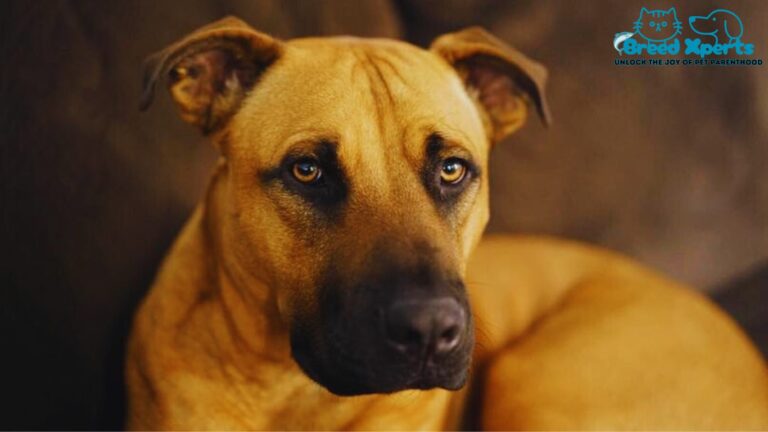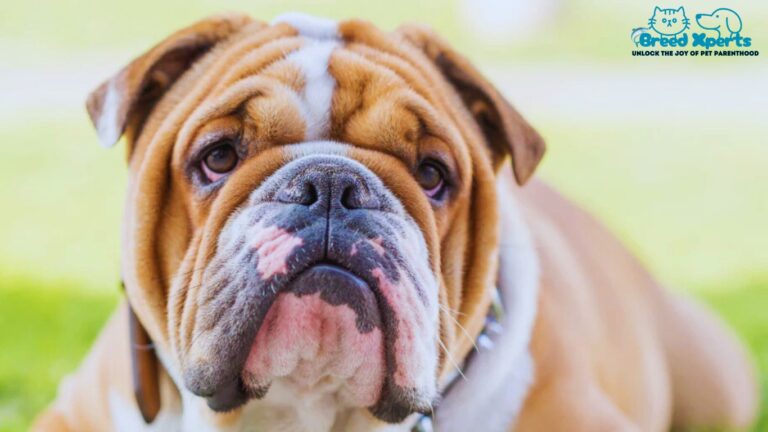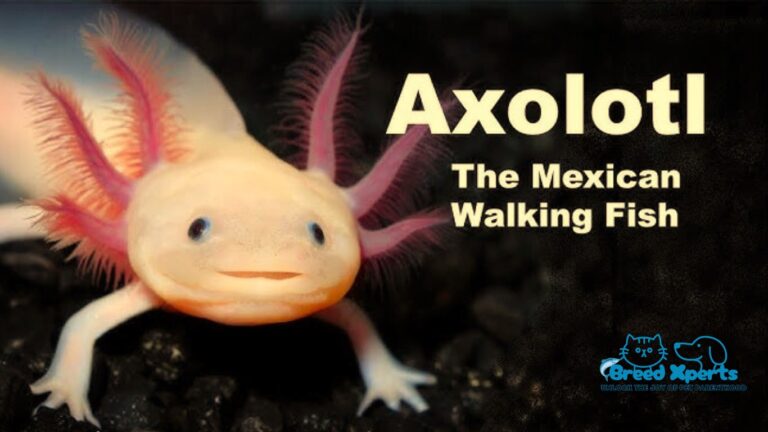The Ultimate Guide to Leopard Geckos as Pets: Care, Feeding, and Habitat Tips
Among reptiles, Leopard geckos are great pets. They are small, friendly, and easygoing. Thus, they remain perfect for both a beginner and an experienced pet owner. They come from desert regions and are known for their bright colors, unique patterns, and friendly personalities. Unlike other reptiles, Leopard geckos are friendly and tame.
They are low-maintenance pets since they demand little upkeep. Leopard geckos are low maintenance concerning space because they do not occupy much space, and their diet is straightforward – they feed mainly on insects, such as crickets or meal-worms. Assuming they have a warm environment and plenty of hiding places, they adapt well as pets.
Another beautiful characteristic of leopard geckos is their long lifespan. With proper care, they can potentially give you years of companionship since they live 15 to 20 years. If you’re after something quiet and entertaining, the leopard gecko certainly makes a great one.

Species Overview
Common Name: Leopard gecko
Scientific Name: Eublepharis macularius
Adult Size: 8 to 10 inches including tail
Lifespan: 20 or more years in captivity
Diet & Nutrition
Diet:
Leopard geckos must be fed with live insects including crickets, mealworms, and dubia roaches. These insects must first be filled with nutritional food before being given to your gecko. Your best option is not to provide your gecko with wild insects for the danger of them getting diseases or being sprayed with pesticides.
Nutrition:
Feed your gecko with insects dipped in calcium powder so it receives the nutrients it needs to continue with its balanced diet. Offer a supplement of vitamins every week. Always have fresh water available. A well-fed gecko will remain lively, healthy, and content.
Lifespan
Leopard Geckos Lifespan:
Leopard geckos are quite long-lived if cared for accordingly. In captivity, their average life spans range from 10 to 20 years. Such a characteristic qualifies them as an excellent pet for people looking for a pet to live with throughout their lives.
Factors Affecting Lifespan:
Leopard geckos can live a longer life if well cared for. A gecko needs the right diet, a clean living condition, and an appropriate temperature. Their lifespan reduces when there is pressure, disease, or poor treatment. Regular check-ups help diagnose any problem in an early stage.
Tips for a Long Life:
Provide them with a secure, clean environment and provide hiding places, as well as proper humidity. Feed them a balanced meal of live insects supplemented with added nutrition. Treat them gently to avoid stressing them out. Healthy and happy geckos live longer.
Size
Size of Leopard Geckos:
Leopard geckos are little reptiles that are sized handily for size management. Fully grown geckos are approximately 7-10 inches long, including their tail. These dimensions make them handily manageable and maintainable.
Growth Stages:
On average, baby leopard geckos grow up to 3 inches in length at hatching. Generally, the growth rate is brisk for the first year. Proper feeding, care, and living space will be required to encourage healthy growth and development.
Size Comparison Between the Male and Female:
Normally, males are larger compared to females and always have stronger body build and also a wide head. The female have a short stature but they are healthy and active. Knowing the size variation in animals will be able to ascertain the right housing and care.

Habitat
Because leopard geckos are from dry lands, the living conditions should be like that. Use a terrarium of considerable size which offers ample space for its activities. Provide a safe lid on top to keep your gecko safe and inhibit any breakout.
Preparing the habitat:
Create a warm and cool area within the tank. Use a heating pad to maintain a warm side temperature of 85-90°F. Provide some hiding places, a moist hide, and a shallow water bowl.
Characteristics
Leopard Geckos Characteristics:
Leopard geckos are tiny social reptiles distinguished by their stunning appearance. They have spotty skin, thick tails, and huge eyes. Their calm temperament has made them favorite with both newer and more experienced keepers, which makes them one of the most in-demand pets.
Physical Features:
Now, mature ones reach up to 7-10 inches in length and about 50-80 grams in weight. Their tails carry fat, so they can survive for some time even in cases of lack of food. They have movable eyelids, which is pretty unusual for geckos.
Behavior and Traits:
Nocturnal, leopard geckos can only be active at night. These species of geckos communicate by chirps and tail movements. They are rather docile, rarely bite, and tolerate mild handling; therefore, they make wonderful pets for their owners.

Behavior and Temperament
Behavior:
Leopard geckos are calm and gentle animals. They roam most of the time at night as they are nocturnal pets. During the day, they usually hide in their hiding places.
Temperament:
They are not so aggressive, and usually are calm and rarely attack. Being inquisitive geckos, they are scared too, especially during the first touch; soon they get used to frequent and soft conversations with people.
Housing
Leopard Geckos Housing:
The house for a leopard gecko is assured and a cozy place. For single-grown adult geckos, a 10-20 gallon water tank would be great. Any given animal should not be able to get out of it. The tank to be used must have a tight-fitting cover.
Essential Setup:
Establish a warm spot and a cool spot in the tank. Utilize a heating pad to maintain the warmer end at 85-90°F. Provide hiding places and a humid hide for shedding.
Substrate and Accessories:
Use safe materials including paper towels, reptile carpets, or even tiles. Stones, wood, and plants will add an aesthetic appeal to your gecko’s enclosure. Ambient lighting, as well as a water bowl, is essential for their health. An appropriate amount of shelter ensures your gecko is always comfortable and healthy.

Heat
Leopard Geckos and Temperature:
Leopard geckos require heat to stay healthy. Since they are ectothermic animals, they rely on external sources of heat to regulate their body temperatures. Appropriate heating promotes digestion, physical functions, and overall health.
Adjust Correct Temperature:
Use a heating pad or heat mat to keep one end of the tank at 85-90°F. The cool end should be kept around 75°F. Do not use heat rocks as burns may occur from them.
Night and Day Heat Needs:
In most cases, leopard geckos don’t need nighttime cooling; it can be left over 70°F in the enclosure to stay at its comfortable temperature. Introduce a thermostat that will monitor temperatures for constant warmth to be placed to your gecko’s comfort.
Light
Lighting and Leopard Geckos:
Leopard geckos are nocturnal, meaning they do most of their active time at night. As a result, they do not need to have bright lights in their tanks. They are night animals that spend most of their time during the day sleeping. An artificial light cycle mimics the natural daylight cycle simply because it helps regulate them.
UVB Lighting:
Leopards, like all reptiles, do not need UVB light. Their dietary vitamin D3 levels are low, at least when they are fed insects that have been dusted with calcium. That being said, if you wish to provide UVB lighting at a lesser level, you can do so.
Day and Night Cycle:
Use a standard light bulb on a 12-hour day and night cycle. It will show the gecko whether it is time to play or rest. To maintain the natural ambiance, all lights have to go off at night.

Humidity
Leopard Geckos and the Moisture Level:
Leopard geckos live in arid desert areas, so they need a minimum moisture level. The ideal moisture is between 30% to 40%. High moisture may cause skin problems or breathing problems.
Holding the right amount of moisture in the air:
Give them a humid shelter, which must be filled with wet sphagnum moss or paper towels to maintain proper humidity levels. This hide can help your gecko with the shedding process and provide a refuge in dry conditions.
Adjusting the amount of moisture in the air:
Do not spray the full tank; this can cause higher humidity. Use a hygrometer for level tracking. If high humidity occurs, enhance ventilation or add a bit of fan to make sure the air moves and there is no moisture buildup.
Substrate
Leopard Geckos and Substrate:
The substrate will be the medium that will form the bed for your leopard gecko. The choice of the right bedding for your pet makes all the difference regarding how they will be taken great care of. It should be comfortable to handle and safe for your gecko.
Safe Substrate Options:
Good substrate options include paper towels, reptile carpet, or tile. The latter two are easier to clean, and they are not likely to be ingested, making them very safe. Avoid sand at all costs since ingestion of this can cause impaction if ingested by your gecko.
Substrate Maintenance:
To keep a substrate clean, daily spot cleaning should be done. Replace completely every 1-2 weeks just to maintain cleanliness. A clean surface prevents bacteria, which also keeps it healthy and safe for your gecko’s habitat.
Health Problems
Diseases in Leopard Geckos:
Diseased leopard geckos are mostly manifested by the lack of proper care. The problems that arise are mainly related to molting issues, respiratory infections, and under nutrition. Their behavior or body changes must be keenly observed.
Hair Loss Issues:
Low humidity may lead to some trouble with the shedding of leopard geckos. They may get their skin stuck, especially close to the toes or tail due to improper shedding. Provide a moist hide for them to aid in shedding as well as monitor the state of their skin.
Problems with Feeding and Digestion:
Health problems may be due to the dietary lack of calcium or due to an overfeeding of insects. Gut-loaded insects and calcium supplements must be fed in huge quantities for a balanced diet. Do not feed too much lest weight gain and digestive issues like constipation occur. Routine check-ups help in checking health problems at the initial stage.
Breed Overview
Overview of Breeding Leopard Geckos:
Leopard geckos are small colorful lizards bred as pets, which originate from arid deserts in Asia and the Middle East. These geckos, in general, have been famed to be docile, with their unique spotted appearance.
Variants and Breeds:
Leopard geckos come in a variety of colors and patterns called morphs. Some of the more popular morphs include the albino, the tangerine, and hypo; these morphs are bred exclusively for their specific color displays, so they are very much in demand by reptile enthusiasts.
Interesting Facts
Leopard geckos are the only species of geckos that can blink since most other geckos cannot blink. Their other distinctive feature is a tail that is quite “fat” and carries a store of water and energy, aiding them in surviving environmental hardships.
Behavior and Socialization:
These geckos are nocturnal; that is, they are active at night. They send messages through tail gestures and chirping sounds. Leopard geckos are very docile and can be handled easily; therefore, they make excellent pets for novices.
Long Lifespan and Adaptability:
Leopard geckos can be cared for well and can live up to 20 years. It is an animal versatile to thrives in a variety of different areas: desert and semi-arid. Their popularity as pets lies in their ability to flourish in captivity.
Population
Leopard geckos have turned out to be the favorite form of lizards of people, due to their astounding patterns and docile nature. They are available in certain natural parts of Asia and the Middle East. A stable population is present in the wild; however, it faces several types of threats.
Habitat destruction is one significant problem for leopard geckos. According to human civilization, animals within the desert and grassland regions have their habitats disappearing. This may cause a decrease in population over time.
Captive breeding has assisted in the conservation of leopard geckos. Many pet stores and breeders breed them in the wild, so it does not exert any pressure on wild populations. The programs ensure a continuous supply of geckos to the pet industry.
Reproduction/Breeding
Sexual maturity occurs in leopard geckos after around 12 to 18 months of development from hatching. They generally mate during the warmer spring periods through the beginning of summer. Males often behave in ways that can be considered characteristic of courtship, including waving their tails, to attract females.
A female mates with a male by accepting their advances, and then mating occurs. A female lays either one or two eggs after the successful mating of her with the male. They usually place them in a warm, secluded area so that predators will not get hold of them.
The eggs will crack open after roughly 45 to 60 days, depending on the temperature. The baby geckos are self-sufficient from the moment they are born, and they look almost like little miniatures of the full-grown versions. Leopard geckos typically breed every year or every other year if kept in an enclosure, and females tend to lay multiple clutches of eggs.
FAQ:
Is a leopard gecko a good pet?
There are plenty of reasons why a leopard gecko would be a great choice as a pet. These vibrant animals are tiny, need little maintenance, and can be left unattended for a few days if needed. They are quiet, odorless, and low-maintenance.
What does a leopard gecko eat?
In their natural habitat, leopard geckos primarily consume invertebrates for food. When your gecko is being held captive, it is important to provide a diverse diet of live invertebrates, also known as livefood. These consist of crickets (such as brown house crickets), calciworms, and locusts, all smaller than the gecko’s head.
Is A leopard gecko aggressive?
Nevertheless, nearly all animals exhibit some form of defensive behavior, and Leopard Geckos are no exception. Geckos do not actively look for chances to attack; they prefer to consume insects, not humans. Having said that, they are capable of biting you if they perceive you as a serious enough threat to justify it.
Do leopard geckos like to be held?
Leopard geckos have the potential to become comfortable with being handled, with some not having any issues with it, although the attitude towards handling varies from one gecko to another. Gently and slowly approach your gecko, ensuring consistency so they can slowly get used to being held in your warm hands without feeling scared.
What are 2 interesting facts about leopard geckos?
Interesting Information. All species within the Eublepharidae genus have eyelids that can be moved, a characteristic not shared by the majority of geckos. Leopard geckos lack toe pads similar to other geckos, which is why they are unable to navigate smooth surfaces by climbing. Leopard geckos molt their skin as a way to avoid being detected by their scent.
Is it OK to touch a leopard gecko?
They dislike transitioning from being alone to being physically approached on a daily basis. Always handle your gecko with care because it is a fragile animal.
What do leopard geckos eat?
Leopard geckos are carnivorous animals that exclusively consume insects. Mealworms, crickets, waxworms, dubia roaches, and superworms are among the preferred choices. You need to provide food for your gecko on a daily or alternate-day basis. It is important to ensure that your gecko always has access to clean water.
How big do leopard geckos get?
With their tails included, geckos typically reach a length of 8 to 10 inches, establishing them as a relatively small reptile.
How often do leopard geckos shed?
Leopard geckos that are fully grown slough their skin every four to eight weeks. Young geckos shed more often due to their rapid growth. A leopard gecko usually completes a full shed in a time frame of 24 to 48 hours.
Do geckos run fast?
These geckos are the fastest in the world, able to sprint at a speed of over 3 meters per second, providing a valuable opportunity to study how small, high-speed animals adapt to different surface conditions in their natural habitat.






